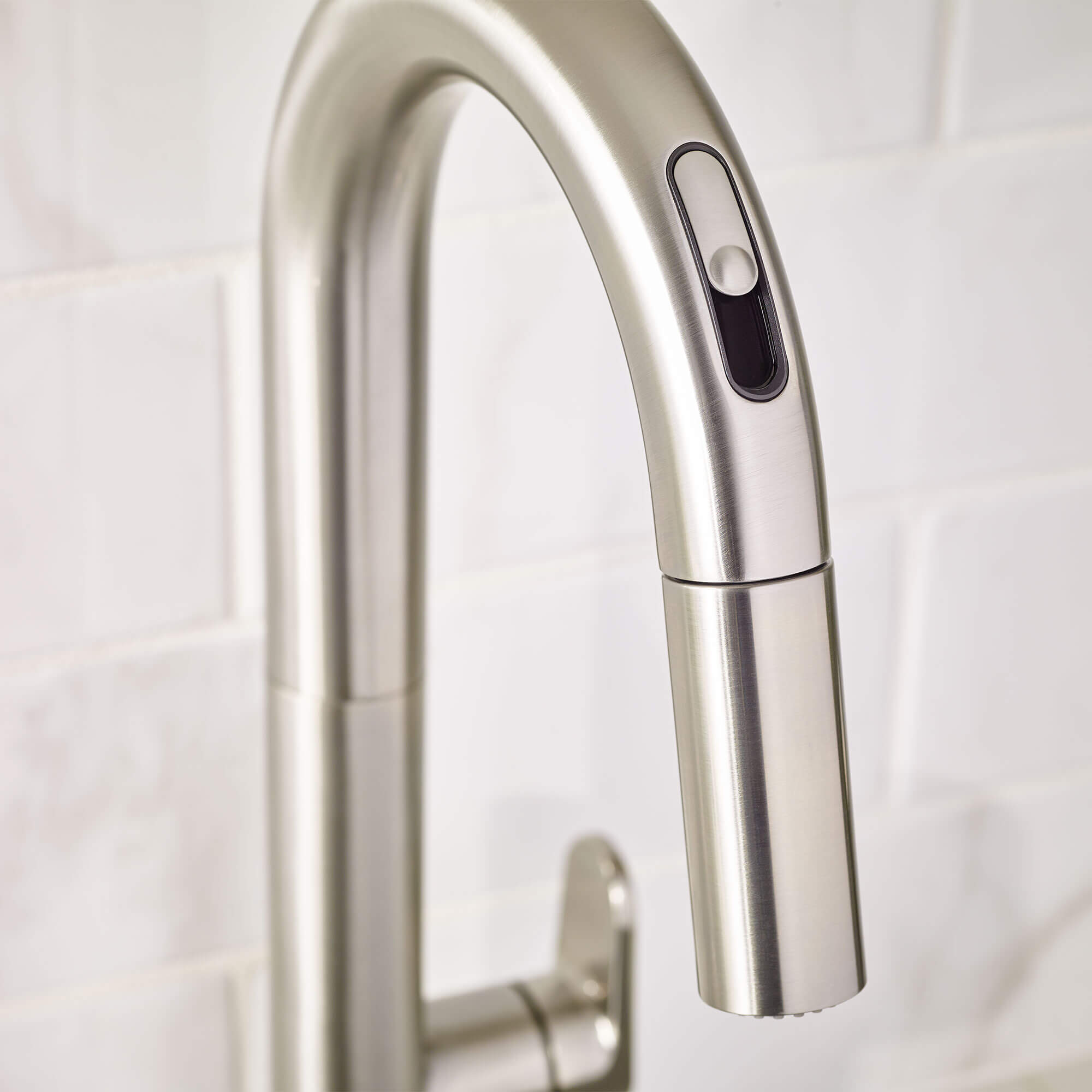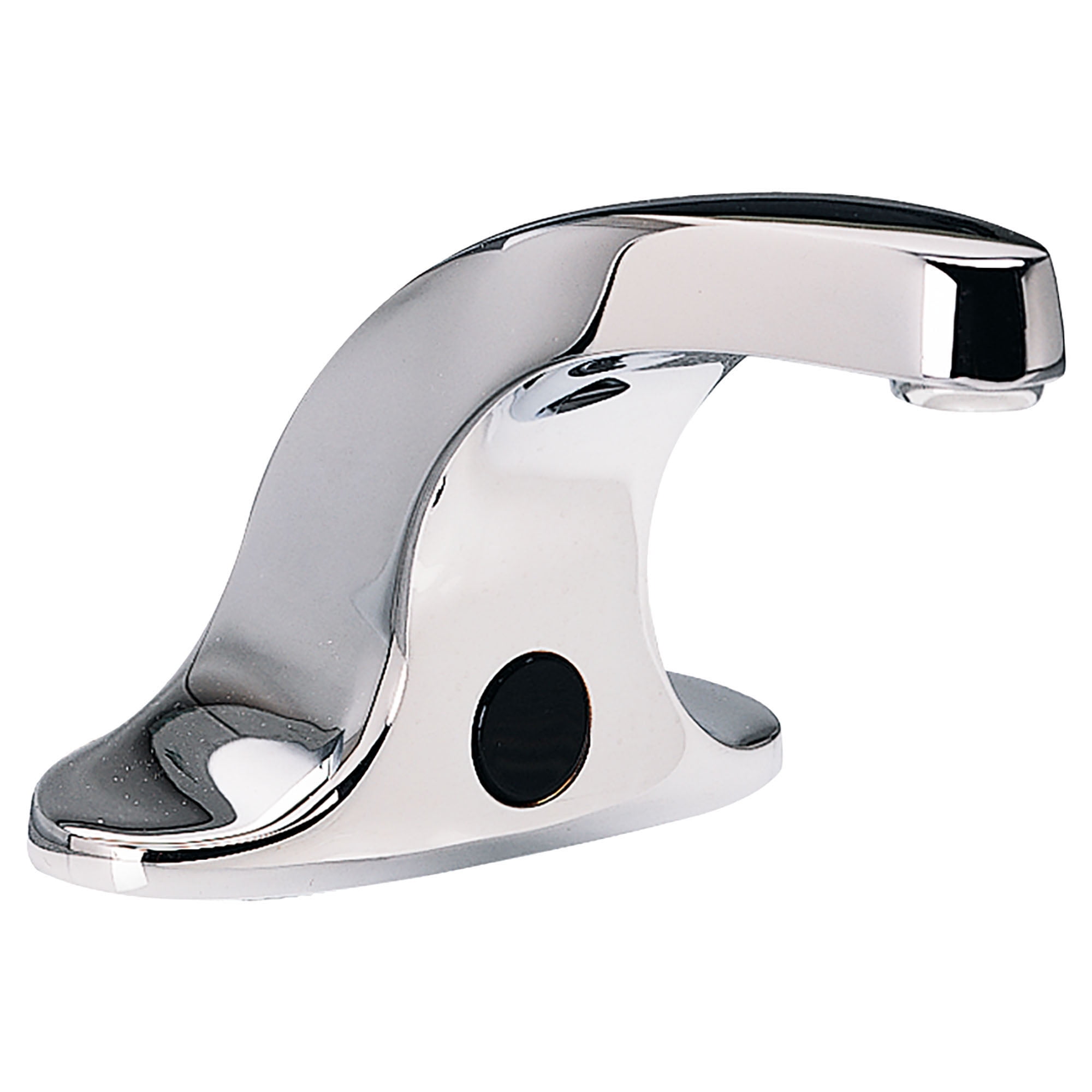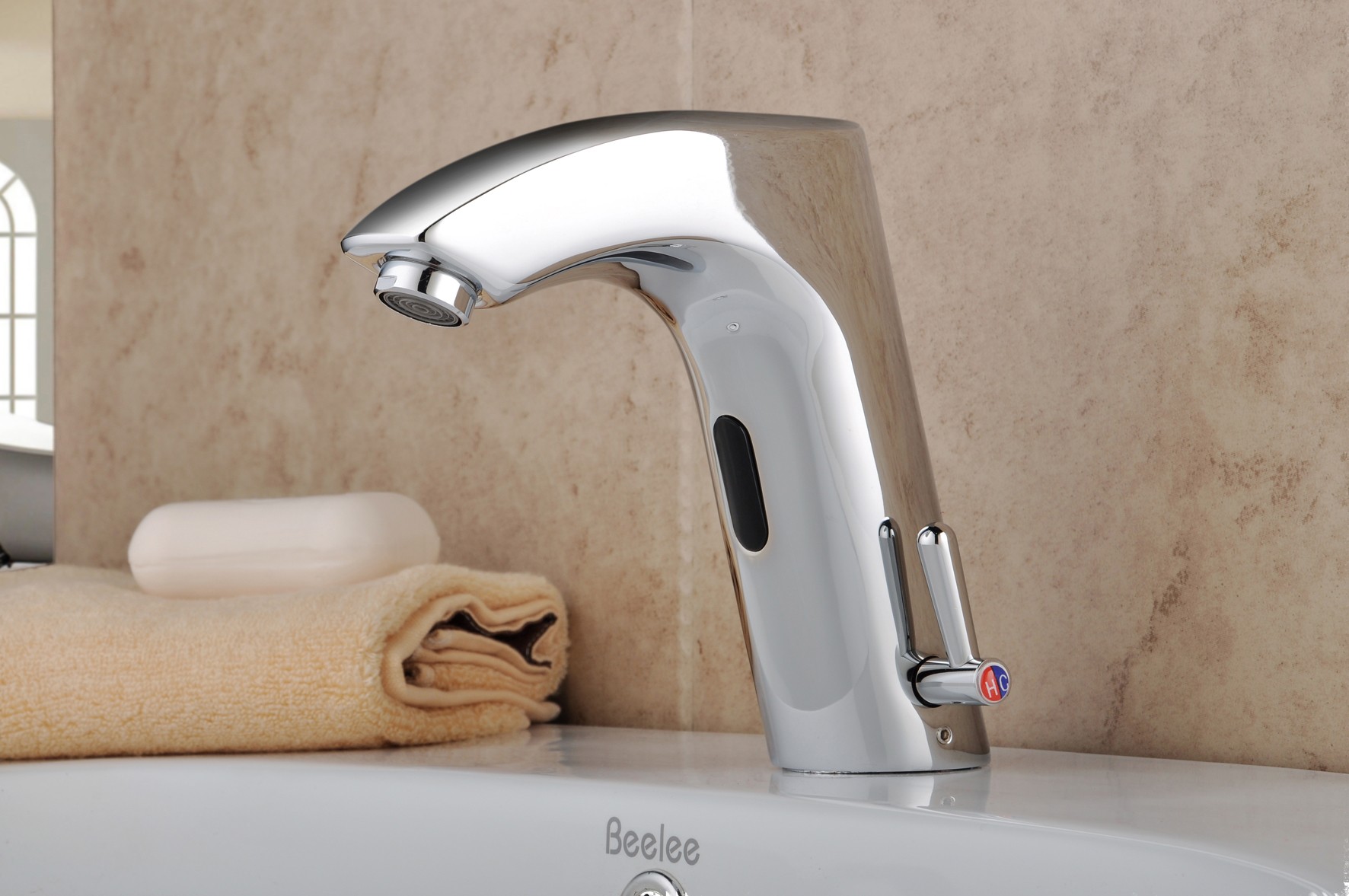Introduction to Touchless Bathroom Faucets

In an era where hygiene and convenience are paramount, touchless bathroom faucets have emerged as a revolutionary solution for modern living spaces. These innovative fixtures offer a hands-free experience, eliminating the need for physical contact with the faucet and significantly reducing the spread of germs.
Touchless faucets, also known as sensor faucets, utilize advanced technology to detect the presence of hands or objects near the spout, automatically dispensing water upon activation. This seamless and hygienic approach has revolutionized bathroom experiences, particularly in commercial settings.
History and Evolution of Touchless Technology in Bathroom Fixtures
The concept of touchless technology in bathroom fixtures has evolved over several decades, driven by the pursuit of hygiene, efficiency, and user convenience. The earliest iterations of touchless faucets relied on infrared sensors to detect movement, activating the water flow when an object broke the infrared beam.
These early systems were often bulky and unreliable, with limited functionality and sensitivity. However, technological advancements in the late 20th and early 21st centuries led to the development of more sophisticated touchless faucets, incorporating advanced sensor technologies and microprocessor control systems.
These modern faucets offer greater accuracy, reliability, and a wider range of features, including adjustable water temperature, flow rate control, and automatic shut-off mechanisms.
Benefits of Using Touchless Faucets in Commercial Settings
Touchless faucets have become increasingly popular in commercial settings due to their numerous benefits, particularly in environments where hygiene and efficiency are critical.
Enhanced Hygiene
Touchless faucets significantly reduce the spread of germs by eliminating the need for physical contact with the faucet. This is particularly important in high-traffic areas such as restrooms, kitchens, and healthcare facilities, where the potential for cross-contamination is high.
Increased Efficiency
Touchless faucets automatically dispense water only when needed, reducing water waste compared to traditional faucets that require manual operation. This can result in significant water savings, contributing to environmental sustainability and cost reductions.
Improved User Experience
Touchless faucets provide a more convenient and hygienic user experience, eliminating the need to touch potentially contaminated surfaces. This is especially beneficial for individuals with mobility limitations or who are concerned about hygiene.
Reduced Maintenance Costs
Touchless faucets are designed for durability and require minimal maintenance. Their automatic shut-off mechanisms help prevent leaks and water damage, reducing the need for repairs and replacements.
Enhanced Aesthetics
Modern touchless faucets are available in a wide range of styles and finishes, complementing any bathroom décor. Their sleek and modern designs add a touch of sophistication to commercial spaces.
Types of Commercial Touchless Bathroom Faucets

Commercial touchless bathroom faucets offer a hygienic and efficient solution for high-traffic areas. These faucets utilize advanced technology to activate water flow without physical contact, reducing the spread of germs and improving overall cleanliness.
Sensor Types
Touchless faucets operate based on different sensor technologies. These sensors detect movement or presence, triggering the water flow. The most common sensor types are:
- Infrared Sensors: Infrared sensors emit invisible infrared beams that detect movement when broken. This technology is commonly found in public restrooms and commercial settings, offering reliable and responsive operation.
- Microwave Sensors: Microwave sensors emit electromagnetic waves that detect movement based on changes in the wave’s reflection. This technology is known for its wide detection range and ability to operate even in low-light conditions.
- Ultrasonic Sensors: Ultrasonic sensors emit high-frequency sound waves and detect movement by measuring the time it takes for the sound to return. This technology is particularly effective in environments with potential interference from other sources.
Motion Detection
Touchless faucets use motion detection technology to trigger water flow automatically. This eliminates the need for manual activation, enhancing hygiene and convenience.
- Single-Sensor Activation: This type of faucet features a single sensor that activates the water flow when movement is detected within its range. It’s a common choice for single-user applications, providing a streamlined experience.
- Dual-Sensor Activation: This advanced technology utilizes two sensors, often placed on opposite sides of the faucet. This allows for greater flexibility and a wider detection range, making it suitable for areas with high foot traffic or where users may approach from different angles.
Popular Brands and Models
Several leading manufacturers offer a diverse range of commercial touchless bathroom faucets. Some notable brands and models include:
- Kohler: Kohler offers a wide selection of touchless faucets, including the Sensate and Artifacts series, known for their sleek design and advanced features.
- Delta: Delta’s touchless faucets, such as the Trinsic and Ara series, are renowned for their durability and innovative technology, ensuring reliable performance in demanding environments.
- Moen: Moen provides a variety of touchless faucets, including the Arbor and Align series, known for their user-friendly design and water-saving features.
Installation and Maintenance of Touchless Faucets
Installing a touchless faucet is a relatively straightforward process, but it requires some basic plumbing knowledge and the right tools. Proper installation ensures optimal functionality and longevity.
Installation Process
The installation process typically involves several steps, starting with shutting off the water supply and disconnecting the old faucet. Once the old faucet is removed, the new touchless faucet can be installed, connecting the water supply lines and securing the faucet to the sink. Finally, the water supply is turned back on, and the faucet is tested for leaks and proper functionality.
Tools and Materials, Commercial touchless bathroom faucet
Installing a touchless faucet requires a specific set of tools and materials.
- Adjustable Wrench: Used to tighten and loosen nuts and bolts.
- Channel-Lock Pliers: Essential for gripping and turning pipes.
- Plumber’s Tape: Used to seal pipe threads, preventing leaks.
- Tubing Cutter: Needed to cut copper or PEX tubing to the correct length.
- Level: Ensures the faucet is installed straight and level.
- Screwdriver: For securing the faucet to the sink.
- Safety Glasses: Protect your eyes from debris.
Maintenance Procedures
Regular maintenance is crucial to ensure the longevity and optimal performance of a touchless faucet.
- Clean the Sensor: The sensor is the most important part of a touchless faucet, and it needs to be kept clean to function correctly. Regularly clean the sensor with a soft cloth and mild soap. Avoid using harsh chemicals or abrasive cleaners, as they can damage the sensor.
- Check the Battery: Touchless faucets typically run on batteries, and the battery life can vary depending on the model and usage. Regularly check the battery level and replace the batteries as needed. Using low-quality batteries can lead to inconsistent performance.
- Inspect for Leaks: Regularly check for leaks around the faucet and the water supply lines. If you notice any leaks, address them promptly to prevent damage and water waste.
- Clean the Aerator: The aerator is a small component that mixes air with water, creating a smooth flow. Regularly clean the aerator to prevent mineral buildup and ensure proper water flow.
Advantages of Touchless Faucets in Commercial Environments

In the bustling world of commercial spaces, hygiene and efficiency reign supreme. Touchless faucets, with their innovative design and functionality, emerge as a powerful ally, transforming the mundane act of handwashing into a seamless and hygienic experience.
Improved Hygiene and Sanitation
Touchless faucets stand as guardians of hygiene, eliminating the need for physical contact with the faucet, thus minimizing the transfer of germs and bacteria. The absence of touch points creates a barrier against the spread of microorganisms, safeguarding the health of individuals and promoting a cleaner, healthier environment.
Reduced Spread of Germs and Bacteria
Studies have shown that touchless faucets significantly reduce the spread of germs and bacteria in public restrooms. The traditional method of handwashing with a manual faucet often involves touching contaminated surfaces, inadvertently transferring germs to the hands and subsequently spreading them to other surfaces. Touchless faucets, on the other hand, offer a hands-free experience, effectively reducing the risk of cross-contamination.
Economic Benefits of Touchless Faucets
Beyond their hygiene benefits, touchless faucets deliver substantial economic advantages, contributing to a more sustainable and cost-effective operation.
Water Conservation
Touchless faucets are designed to automatically shut off the water flow once the hands are withdrawn, eliminating the wasteful practice of leaving the water running unnecessarily. This intelligent feature promotes water conservation, leading to significant reductions in water consumption and utility bills.
Reduced Maintenance Costs
Touchless faucets are engineered for durability and longevity, requiring minimal maintenance compared to traditional faucets. Their robust design and absence of moving parts minimize the risk of breakdowns and repairs, resulting in lower maintenance costs over the long term.
Considerations for Choosing a Touchless Faucet
A touchless faucet, a modern marvel of technology, offers a seamless and hygienic experience in commercial settings. But choosing the right touchless faucet involves a thoughtful consideration of various factors that influence its performance and overall suitability. This decision, while seemingly straightforward, is pivotal in shaping the user experience and optimizing operational efficiency.
Flow Rate and Water Pressure
The flow rate and water pressure are crucial considerations for commercial touchless faucets. A balance between these two factors ensures efficient water usage and a comfortable user experience.
- High flow rates are beneficial for quick handwashing, but they can lead to water wastage if not carefully managed.
- Conversely, low flow rates can lead to prolonged handwashing times, impacting user satisfaction.
- Water pressure also plays a vital role. Insufficient pressure can result in weak water flow, making handwashing ineffective.
- Conversely, excessive pressure can lead to splashing and water wastage.
A well-designed touchless faucet, with an optimal balance between flow rate and water pressure, delivers a seamless and efficient handwashing experience.
Sensor Range and Activation
The sensor range of a touchless faucet is a critical factor in its usability. A wide sensor range ensures ease of activation, allowing users to approach the faucet from various angles without triggering it unintentionally.
- A wider sensor range provides greater flexibility and convenience for users, especially in crowded environments.
- The activation method, whether motion-activated or infrared, also plays a crucial role.
- Motion-activated faucets respond to movement within the sensor range, while infrared faucets detect heat signatures.
The choice of activation method depends on the specific needs of the commercial setting and the desired level of hygiene.
Aesthetics and Design
Aesthetics and design play a crucial role in enhancing the overall bathroom experience. Touchless faucets, beyond their functional benefits, contribute to the visual appeal of the space.
- Aesthetics, however, go beyond mere appearance.
- The design should be user-friendly and complement the overall bathroom decor.
- A well-designed faucet, with its sleek lines and modern aesthetics, adds a touch of elegance and sophistication to the bathroom environment.
Aesthetics and design, while often subjective, are crucial factors that influence the user experience and create a positive impression.
Future Trends in Touchless Bathroom Faucets

The world of touchless bathroom faucets is constantly evolving, driven by technological advancements, changing consumer preferences, and a growing focus on sustainability. This evolution is poised to usher in a new era of touchless faucets, offering a blend of convenience, hygiene, and eco-consciousness.
Integration of Smart Home Features
The future of touchless bathroom faucets will see a seamless integration with smart home ecosystems. Imagine a future where your faucet responds to voice commands, automatically adjusts water temperature based on your preferences, or even sends you notifications when it’s time to replace the filter. This convergence of technology will not only enhance convenience but also open up exciting possibilities for personalized experiences.
- Voice Control: Imagine simply saying, “Hey Google, turn on the hot water” to activate your touchless faucet. Voice assistants will become increasingly integrated, allowing for hands-free operation and a more intuitive user experience.
- Water Temperature Control: Advanced sensors and algorithms will enable faucets to learn your preferred water temperature, automatically adjusting it for a comfortable experience every time.
- Smart Notifications: Connected faucets could send you alerts when the filter needs replacing, preventing potential water quality issues and ensuring optimal performance.
Sustainability and Eco-Friendly Designs
As environmental consciousness grows, touchless faucets will play a crucial role in promoting water conservation. Innovations in water-saving technologies will become increasingly prevalent, reducing water waste and minimizing the environmental impact of bathroom fixtures.
- Low-Flow Technology: Touchless faucets will be equipped with advanced low-flow aerators that reduce water consumption without compromising performance, ensuring a powerful stream while saving precious water resources.
- Water-Sensing Mechanisms: More sophisticated sensors will be developed to detect the presence of hands and automatically adjust the water flow, preventing unnecessary water waste when the faucet is not in use.
- Water-Saving Modes: Smart features will allow users to select different water-saving modes, such as a “quick rinse” mode that uses less water for tasks like washing hands.
Advanced Sensor Technology
Touchless faucets will benefit from advancements in sensor technology, leading to more accurate and responsive operation. This will enhance the user experience, making the faucets even more intuitive and reliable.
- Enhanced Motion Detection: Improved sensors will be able to detect hand movements from greater distances and with greater accuracy, ensuring a seamless and responsive experience.
- Anti-Interference Technology: Future faucets will be designed to resist interference from external factors, such as ambient light or nearby objects, ensuring reliable operation in a variety of environments.
- Personalized Settings: Sensors will be able to learn individual user preferences, adjusting the activation distance and other settings for a personalized and comfortable experience.
